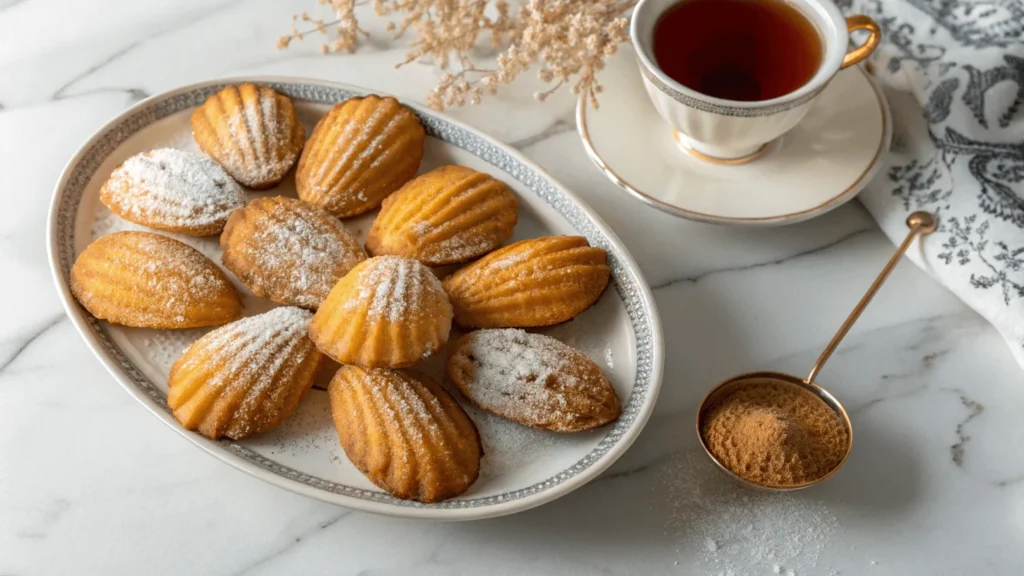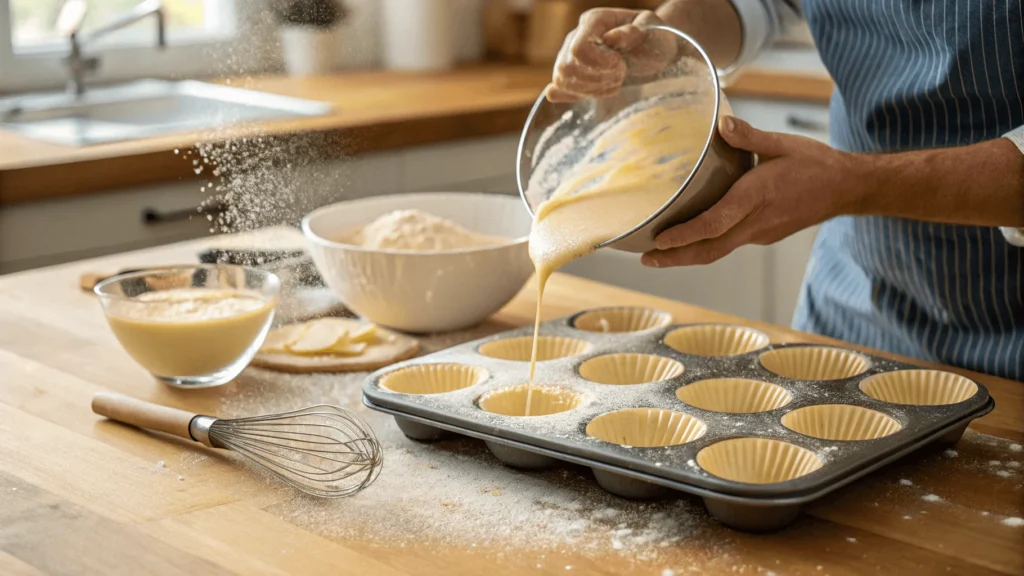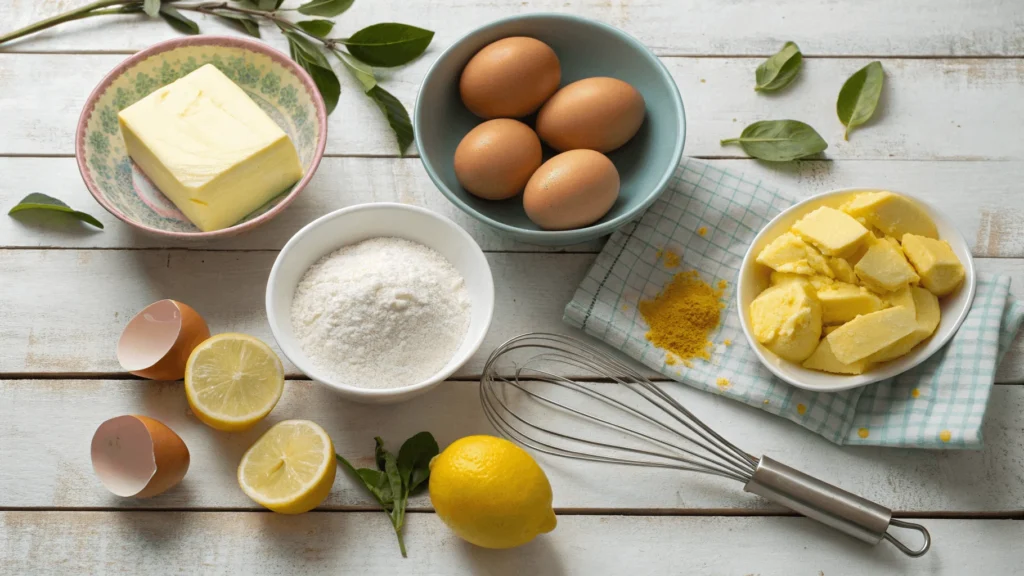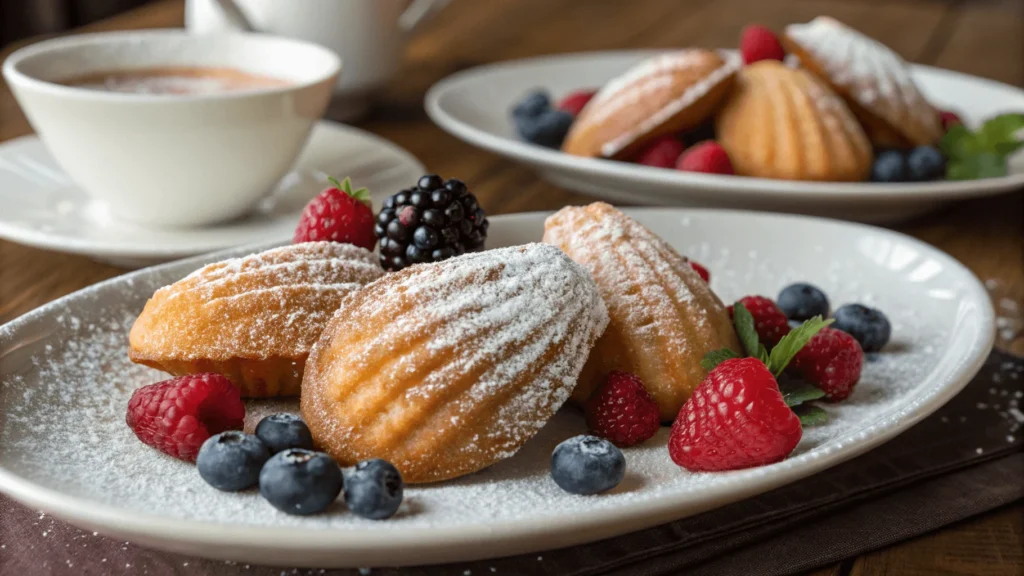Madeleines are delicate, buttery, and sweet treats that are often a favorite among pastry lovers. However, one of the most common challenges bakers face is maintaining the perfect moisture level in these small, shell-shaped cakes. How to Keep Madeleines Moist? This question is on the minds of both beginners and seasoned bakers alike, as dry madeleines can be a real disappointment.
In this article, we’ll explore various techniques, ingredients, and tips that can help you how to keep madeleines moist and fluffy. From understanding the factors that affect the moisture level to learning how different ingredients play a crucial role, this guide will provide you with the knowledge you need to master how to keep madeleines moist, ensuring that your classic French pastry turns out perfectly every time.
Table of Contents

How to Keep Madeleines Moist? Understanding the Perfect Madeleine
Madeleines are small sponge cakes that originate from France, known for their unique shell shape and delicate texture. To achieve the perfect madeleine, it’s crucial to understand the factors that contribute to their flavor, texture, and moisture retention.
The moisture level in madeleines is largely dependent on the balance of ingredients and baking techniques. Too much flour or overbaking can result in dry, crumbly cakes, while too little flour or underbaking can make them too wet. The key to how to keep madeleines moist lies in creating a balanced batter and following precise baking instructions.
Moreover, madeleines should be soft yet firm, with a slight crispness on the edges. Discover how to make madeleines with cream for a softer texture to further enhance their moisture.
What Factors Affect the Moisture of Madeleines?
Several factors influence how moist your madeleines will be. The most significant of these are the ingredients used, the technique you follow, and how you handle the batter. Let’s break down some of these crucial elements to answer the question: How to Keep Madeleines Moist?
How Does Butter Help Keep Madeleines Moist?
Butter is one of the primary ingredients that contribute to the rich, moist texture of madeleines. It is essential not only for flavor but also for its ability to trap moisture in the batter. When butter is incorporated into the mixture, it helps keep madeleines moist, ensuring they stay soft and tender.
To retain moisture in your madeleines, it’s essential to use high-quality unsalted butter. It’s also important to allow the butter to come to room temperature before mixing. This ensures that it blends smoothly into the batter, resulting in a more even distribution of moisture throughout.
A common mistake bakers make is using too much butter or not creaming it properly with the sugar. This can lead to greasy, overly moist madeleines or a batter that doesn’t hold enough moisture. The key is to use butter in the correct proportion and to handle it carefully during the mixing process. Learn why madeleine cookies are so good and how butter enhances their texture.
How Do Eggs Contribute to Keeping Madeleines Moist?
Eggs are another critical ingredient in maintaining the moisture level of madeleines. They help provide structure and stability to the batter while also adding moisture. Eggs bind the ingredients together and help keep madeleines moist, giving them a soft, sponge-like texture that is both airy and moist.
The number of eggs used in the recipe can influence the final texture. Too few eggs can lead to dry, dense madeleines, while too many can make them overly moist or too rich. Finding the right balance of eggs is essential to keeping madeleines moist without compromising texture.
It’s also important to beat the eggs well with the sugar until the mixture is light and frothy. This step incorporates air into the batter, which contributes to the final rise and softness of the madeleines, ensuring they remain tender and moist after baking.
How Do Liquids Help Keep Madeleines Moist?
In addition to eggs and butter, liquids such as milk or cream can be added to madeleine batter to enhance moisture. These ingredients help balance the dryness of the flour and add richness to the batter, which plays a key role in keeping madeleines moist during baking.
For best results, use full-fat milk or heavy cream. These liquids contain more fat, which helps retain moisture better than lower-fat alternatives. However, you don’t want to add too much liquid, as this can affect the structure of the batter and cause the madeleines to be too dense or underbaked.
In some recipes, a small amount of honey or syrup can be incorporated into the batter to provide additional moisture and a slight sweetness. These ingredients are especially useful when you want to add depth to the flavor while keeping madeleines moist and maintaining a soft, tender texture.
How Does Baking Technique Affect the Moisture of Madeleines?
Baking plays a pivotal role in keeping madeleines moist. The way you handle the batter, the temperature of your oven, and the baking time all contribute to the final texture and moisture content.
How Does Resting Time Help Preserve Moisture in Madeleines?
Resting the madeleine batter before baking is a technique that helps develop the texture and moisture retention. Many bakers recommend letting the batter sit for at least 30 minutes before baking. This resting period allows the flour to absorb the liquids, which plays a key role in keeping madeleines moist, resulting in a more tender crumb and a more consistent texture.
By resting the batter, you give it time to fully hydrate, which helps the madeleines retain moisture during baking. Additionally, this process allows the ingredients to meld together, resulting in a smoother and more uniform batter that will bake more evenly.
Be mindful not to over-rest the batter, as this can lead to a loss of the delicate texture. A short resting period is enough to ensure that the batter is moist and ready for baking.
How Can You Add Zests and Flavors Without Drying Out Madeleines?
Adding flavorings such as citrus zest, vanilla extract, or other spices can enhance the taste of your madeleines without compromising moisture. However, it’s important to ensure that the additional ingredients do not interfere with the moisture balance.
For instance, citrus zest adds a fresh, aromatic flavor without affecting the moisture of the batter, as long as it is used in moderation. Overusing flavorings can sometimes lead to an imbalance in the liquid-to-dry ratio, causing the madeleines to dry out during baking. Therefore, adding small amounts of zest or flavoring ensures that you keep madeleines moist while maintaining the right balance in the batter.
Moreover, incorporating a bit of orange or lemon juice can help retain moisture, while also giving your madeleines a fragrant, refreshing taste.

How to Maintain Moisture with Ingredient Substitutions in Madeleines?
In some cases, bakers might want to make substitutions in their recipes due to dietary preferences or ingredient availability. While it’s possible to swap some ingredients, it’s essential to consider how each change will affect the moisture content and how to keep madeleines moist throughout the baking process.
How to Make Moist Gluten-Free or Vegan Madeleines?
If you are baking gluten-free or vegan madeleines, there are a few key changes to make in order to preserve moisture. For gluten-free madeleines, use a blend of gluten-free flours, such as almond flour or rice flour, which retain moisture better than regular flour.
For vegan madeleines, replacing eggs with a combination of flaxseeds or chia seeds mixed with water helps provide structure and moisture. Additionally, using plant-based milks such as coconut or almond milk can contribute to the moisture of the batter, helping you keep madeleines moist without drying them out.
It’s important to adjust the baking time when making these substitutions, as gluten-free or vegan madeleines may take a slightly different amount of time to bake. Keep a close eye on them to ensure they don’t dry out.
How Do Baking Powder and Baking Soda Keep Madeleines Moist?
Baking powder and baking soda are both leavening agents that help the batter rise and create a light, airy texture in madeleines. These ingredients also play a role in moisture retention by preventing the batter from becoming too dense during baking.
Baking powder is generally used in madeleine recipes, but baking soda can be substituted in certain cases, especially when there is an acidic ingredient like lemon juice in the batter. The leavening action of these agents helps the madeleines rise while maintaining moisture throughout the process.
Using the correct amount of leavening agents is crucial. Too much can cause the batter to rise too quickly and crack, resulting in dry spots. Too little can lead to flat, dense madeleines that lack moisture.

How to Store Madeleines to Keep Them Moist and Fresh?
Once your madeleines are baked, proper storage is essential to keep them fresh and moist. How to Keep Madeleines Moist after baking? The answer lies in storing them in an airtight container and keeping them in a cool, dry place.
How Does Freezing Help Keep Madeleines Moist?
Freezing madeleines is one of the best ways to preserve their moisture over time. If you want to make a batch ahead of time, allow the madeleines to cool completely before placing them in an airtight container or a freezer bag. Freezing them helps maintain their soft texture and flavor.
When you’re ready to enjoy them, simply thaw the madeleines at room temperature for a few hours. Avoid microwaving them, as this can cause them to dry out. Reheating them in a low-temperature oven is a better way to preserve their moisture.
What Common Mistakes Lead to Dry Madeleines?
To achieve the perfect moist madeleines, avoid common mistakes such as overbaking, not measuring the ingredients correctly, or opening the oven door too frequently during baking. These missteps can lead to dry and crumbly cakes that lack the delicate texture we aim for.
Additionally, using low-quality butter or underbeating the eggs can contribute to dryness. Be sure to follow the recipe precisely and adjust as needed based on your experience.
How Do You Revive Dry Madeleines?
If your madeleines end up dry despite your best efforts, there are ways to revive them. One method is to lightly brush them with a syrup made of water and sugar, which can add moisture back into the cakes. Another option is to store the madeleines in a sealed container with a slice of bread. The bread will absorb moisture, helping to soften the madeleines.
However, prevention is always better than cure. By following the tips and techniques outlined in this article, you can ensure your madeleines remain moist and delicious every time.
Frequently Asked Questions (FAQs)
How to Keep Madeleines Moist after baking?
To keep your madeleines moist after baking, store them in an airtight container at room temperature. If you want to store them longer, you can freeze them by placing them in an airtight container or freezer bag. Freezing helps preserve their moisture and texture. When ready to enjoy, thaw them at room temperature or reheat them in a low-temperature oven to retain their softness.
Can I substitute coconut oil for butter in madeleines?
Yes, you can substitute coconut oil for butter in madeleines, but the texture and flavor may slightly change. Coconut oil is a solid fat at room temperature, so it can provide a similar texture to butter. However, it has a distinct flavor that may influence the overall taste of your madeleines. If you choose to use coconut oil, replace it in a 1:1 ratio with butter.
Why are my madeleines dry?
Madeleines may turn dry if the batter is overmixed, the baking time is too long, or if there is an imbalance in the wet-to-dry ingredient ratio. Overbaking can lead to the evaporation of moisture, resulting in dry cakes. It’s essential to follow the recipe closely, measure ingredients accurately, and avoid opening the oven door too frequently while baking.
Can I use dairy-free milk in madeleines?
Yes, you can use dairy-free milk alternatives like almond milk, coconut milk, or oat milk in madeleines. These milk options help maintain moisture in the batter while catering to dairy-free diets. Be sure to choose an unsweetened variety to avoid altering the flavor profile of your madeleines.
How can I add flavors to madeleines without drying them out?
You can add flavors like vanilla extract, citrus zest, or spices to your madeleines without drying them out by using them in moderation. Excessive flavorings, especially dry ingredients, can alter the moisture balance. To maintain moisture, it’s best to incorporate liquid flavorings like lemon juice or a small amount of syrup, along with the dry ingredients.
Can I make madeleines in advance?
Yes, you can make madeleines in advance. To keep them fresh, store them in an airtight container at room temperature for up to 3 days. Alternatively, freeze them after baking and thaw them when ready to serve. Freezing will help preserve their moisture and texture for longer periods.
Conclusion
Mastering the art of making moist madeleines requires a careful balance of ingredients, techniques, and storage methods. By paying attention to factors such as butter quality, egg incorporation, and baking time, you can create madeleines that are soft, tender, and full of flavor. Dive into the key differences between madeleines and financiers to further expand your baking expertise.

With these tips, your madeleines will remain fresh and delicious every time you bake them. Remember, the secret to moist madeleines lies in understanding the balance of ingredients and using the right techniques.


3 thoughts on “How Do You Keep Madeleines Moist? Expert Tips for Soft Cakes”